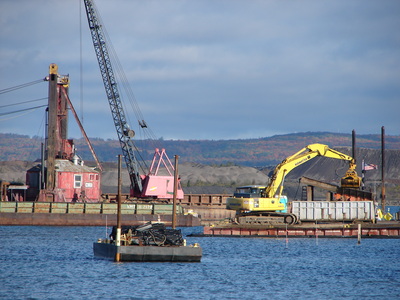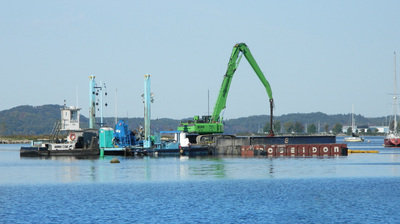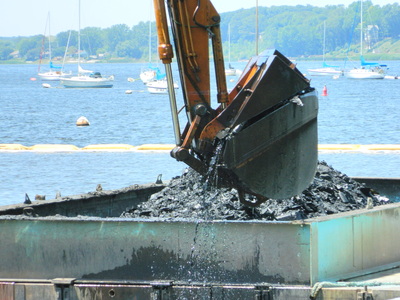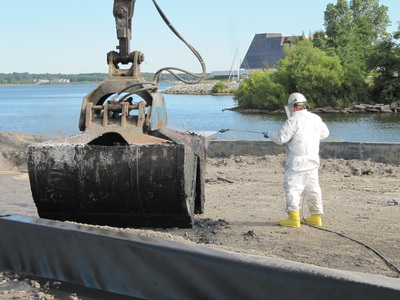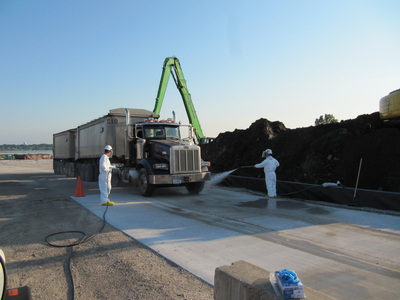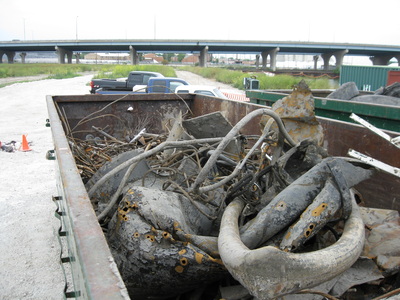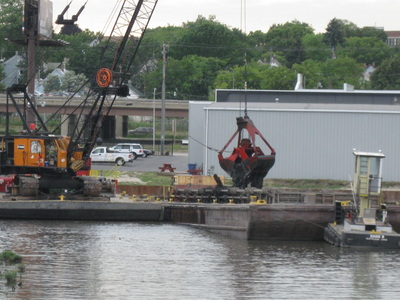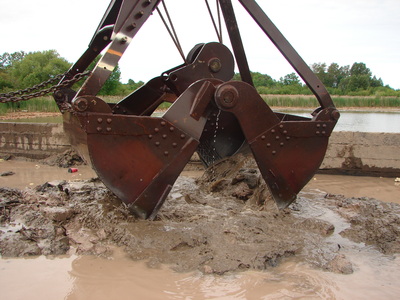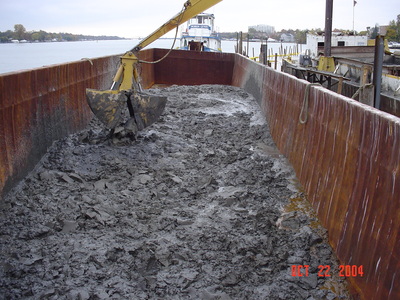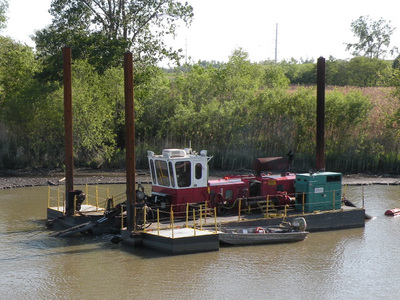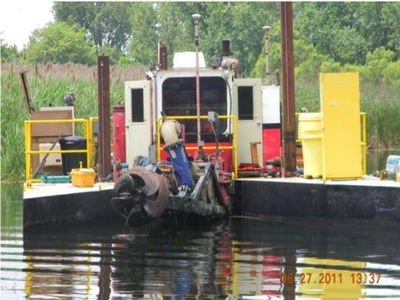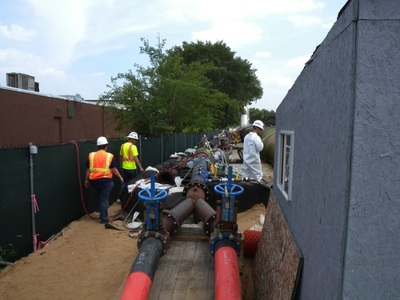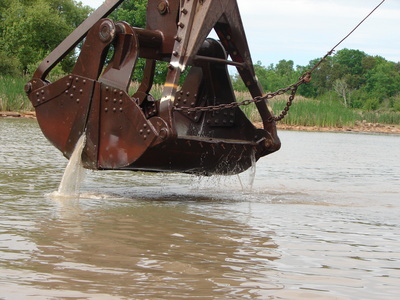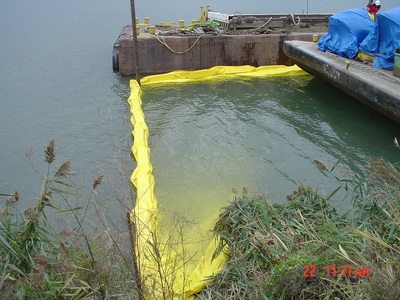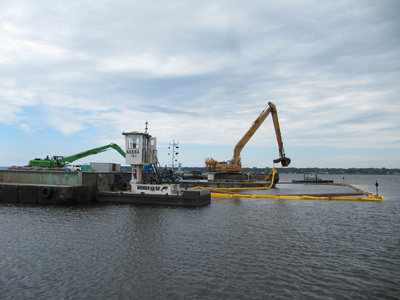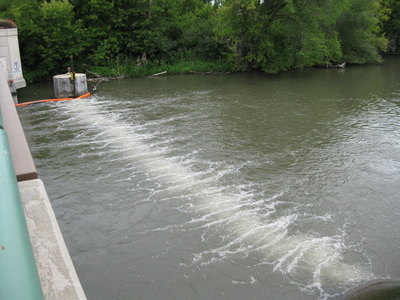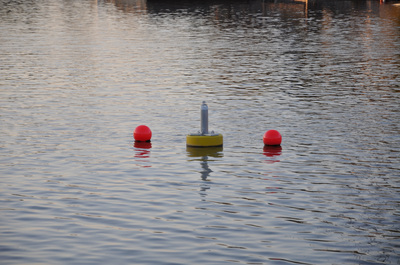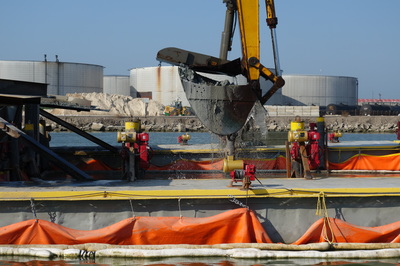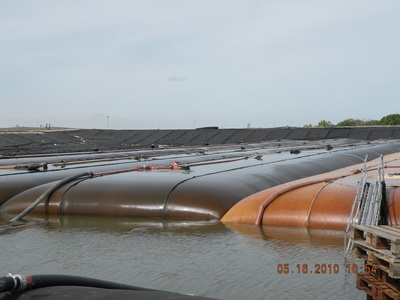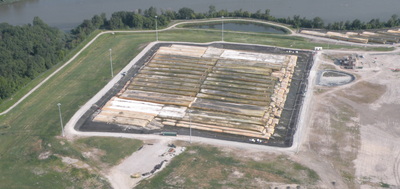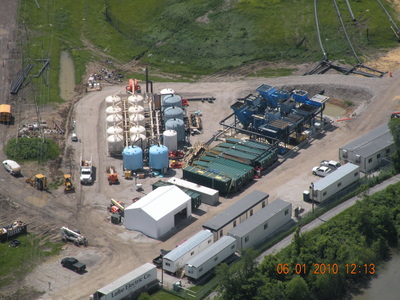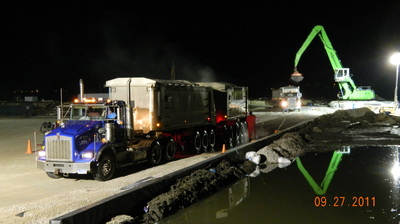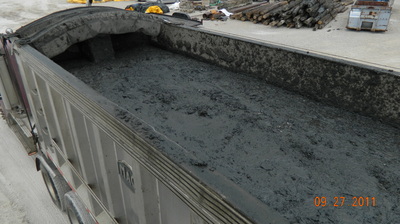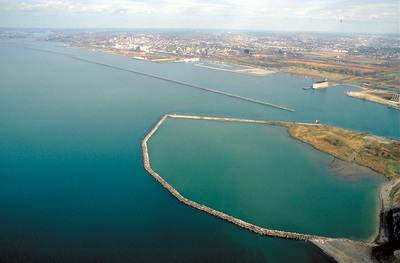Dredging is a common remediation method that uses large excavating equipment to remove sediment from lake and river bottoms. Unlike navigational dredging, which emphasizes a speedy removal, environmental dredging uses special equipment and slower, more precise techniques to minimize the mixing of contaminated sediment and water.
There are two main types of dredging: mechanical and hydraulic. Mechanical dredging uses a bucket to scoop up sediment and move it to a barge or other container. Hydraulic dredging vacuums sediment from the lake or river bed after it's loosened with a drilling cutter head.
To prevent too much sediment from being stirred into the water during mechanical dredging, dredgers can use an environmental clamshell bucket with a tighter close. Silt curtains or air bubble curtains around the dredge area can create a temporary barrier and prevent contaminated sediment from flowing downstream. The water around the dredge area is monitored to provide an early warning if sediment begins to flow out of the area. Mechanical dredging churns up roughly as much sediment as a large rainstorm, which does not typically warrant an emergency response. However, projects can be temporarily shut down to fix equipment malfunctions or other issues.
Once an area is hydraulically dredged, the watery sediment mixture is piped to a processing area to be dried. Sediment from mechanical dredging may be barged to land. The dewatering process typically happens on land to reduce transport and disposal costs. The drained water is contained, monitored, and treated before it is released back into the water body or sent to a wastewater treatment plant. The sediment may be treated with stabilizing agents before disposing into a certified landfill or a confined disposal facility for safe, long-term containment.
